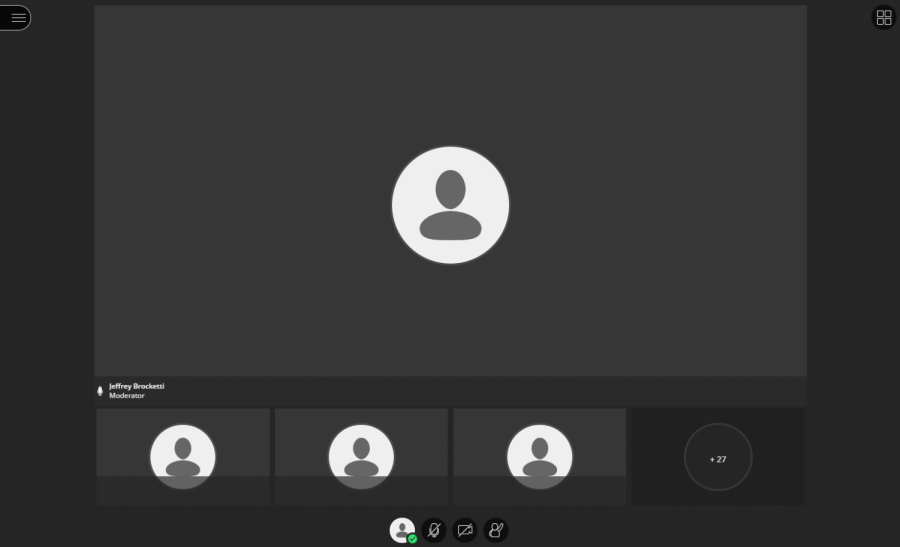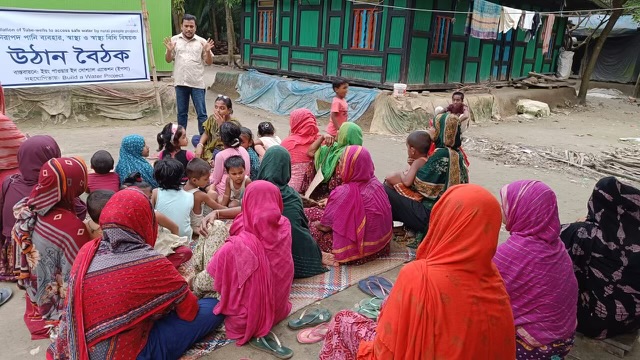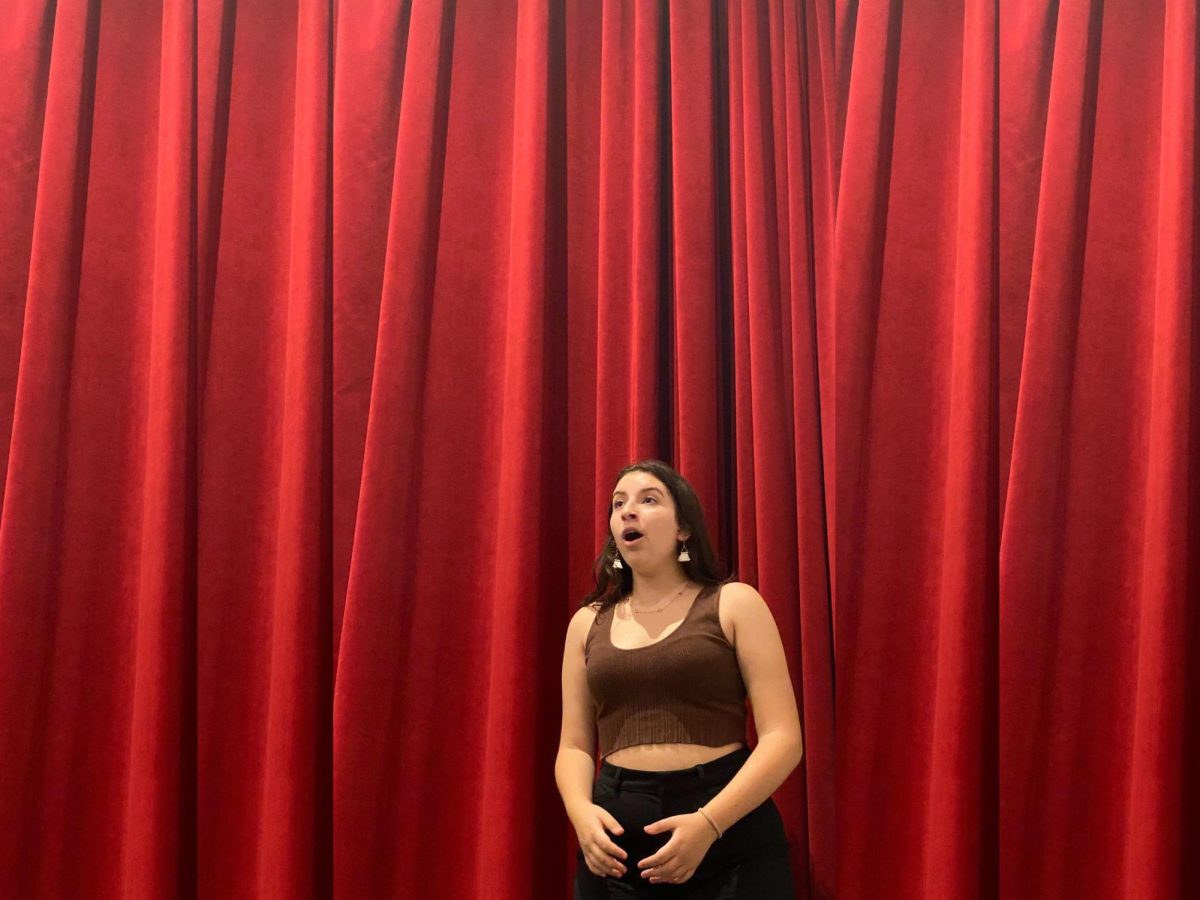The hectic first quarter of the 2020-21 school year in McLean ended Friday, Oct. 30, with a short break for students to catch their breath. The school year started differently due to COVID-19, which restricted in-person learning in school building and forced classes to be held virtually.
There were lots of concerns and negative projections about how online learning would work, but contrary to expectations, classes were uneventfully held through a web conferencing tool called BlackBoard Collaborate Ultra (BBCU), along with various kinds of Google Apps and learning assistance websites.
“[My classes] used BBCU, Google Meets, Albert.io and AP Classroom,” junior Steven Guo said. “The tools worked well, and it allowed us to attend classes live. Assignments were mostly posted on BlackBoard and Google Classroom, which was well organized and helpful for me to keep track of things.”
Classes looked slightly different across teachers because each of them came up with different types of lectures based on what was best for their class. Nevertheless, a majority of classes focused on giving students more time to practice what they learned and to do group work with others.
“We spend our valuable ‘live’ class time working on practice problems,” said Steven Walker, who teaches AP Calculus AB and BC this year. “This is great because students can ask questions while they work on difficult problems and get almost all of their assignments done in class.”
Using BBCU helped make the environment like a real classroom, for instance allowing students easy to question contents that they don’t know.
“Students are in breakout rooms in BBCU and can move around to other rooms or the main room to ask questions of me or their peers,” Walker said.
Tests and quizzes were also held online, along with various measures to prevent students cheating and get the score they deserve.
“On quiz days we migrate over to Google Meet and every student turns their camera on,” Walker said. “Each class has a completely different quiz to…deter cheating, and each problem is vetted by our calculus teachers. [We put in] hours upon hours of work to create these quizzes and make them equitable assessments.”
Over time, teachers have adapted to the new online environment, but are still working hard to make classes as effective as possible.
“I’m learning along the way as well, and thinking to implement new things in a certain way,” said Jeffrey Brocketti, who teaches Physics and Astronomy. “There were some issues which needed to be addressed before the next class, and I had to modify it or scrap it and do something different.”
The downside of teachers rebuilding their classes from the ground up, was that it gave them a much larger workload then they usually have.
“I think the assumption that because you don’t have students in front of you, the workload is going to be nonexistent, but it’s the complete opposite of that,” Brocketti said. “I’m working more this year than I have probably since my second year of teaching because everything has to be reimagined for live classes. For AP classes, I spend a couple hours a weekend recording, editing, and uploading videos.”
Although teachers have made many improvements to online learning, it cannot measure up to the effectiveness of in-person learning. One of the major limitations is that it depends wholly on students’ own will to participate, so in some classes, only the teacher talks and students remain silent.
“I think I can speak for most teachers when I say that we wish that all students would have their mics and cameras on all of the time—or at least when speaking to us,” said Julia Braxton, who teaches AP Government and Combating Intolerance this year.
Other teachers say that it’s hard for them to check nonverbal expressions and figure out if students are following along the courses.
“[When you’re in a classroom] you get immediate feedback, but here you get two or three seconds of awkwardness and then you just hope someone’s going to type into the chat box or get on the microphone,” he said.
Students have complaints regarding the amount of homework, as many claim that the workload is very overwhelming.
“There’s definitely more homework compared to if we were still in person,” junior Ricardo Cabral said. “I think the amount needs to be cut down and [teachers need to] give less homework and asynchronous work for students.”
Since many students learn in their homes with their cameras turned off and have their laptop or phones next to them, there are lots of possible distractions to keep them from focusing completely on their classes.
“It is definitely a lot easier to use my phone or computer to do non-school related things, and they are very tempting,” Guo said.
Changes are still being made to improve virtual learning, such as the change of every Highlander Time (HT) to Highlander Time Flex, which will enable students to use their time more flexibly.
“I like the idea of having a HT Flex every HT,” Tan said. “It just gives me a lot more freedom when planning out my schedule and I can go ask a teacher a question whenever I need to without having to leave another HT.”
Even though the experience was tough, the first quarter turned out better than expected, thanks to teachers’ hard work.
“This is a challenging time for all of us, students and teachers alike, and I think that we, as students, sometimes forget that our teachers are struggling too,” Guo said.
Now, it is time for students to move on for a better second quarter, with a positive mindset and willingness to reach out for help.
“Please don’t be afraid to let us know what you need to succeed during this time,” Braxton said. “We just want to know how to best help you, so let us know how you’re feeling and what you need.”
All additional information about virtual learning is available here.
https://mcleanhs.fcps.edu/academics/virtual-learning









